When the critic Reyner Banham published his seminal essay, “The New Brutalism,” in 1955, the project he used to illustrate the essential elements of this new architectural language was a school. Designed by Peter and Alison Smithson, the Hunstanton School was assembled from brick, glass, concrete, and steel and, as Banham writes, was “almost unique among modern buildings in being made of what it appears to be made of.” More than half a century later, in 2020, the architect Derek Dellekamp took on a commission for one of nearly 300 publicly funded community centers built in marginalized districts of his native Mexico City, part of a city-wide initiative called PILARES, or Points of Innovation, Freedom, Art, Education, and Knowledge. He approached his design using the same fundamental principles. “There are no details or finishes. We’ve learned through previous government projects that that’s what works,” he says. “It’s Brutalism 101.”
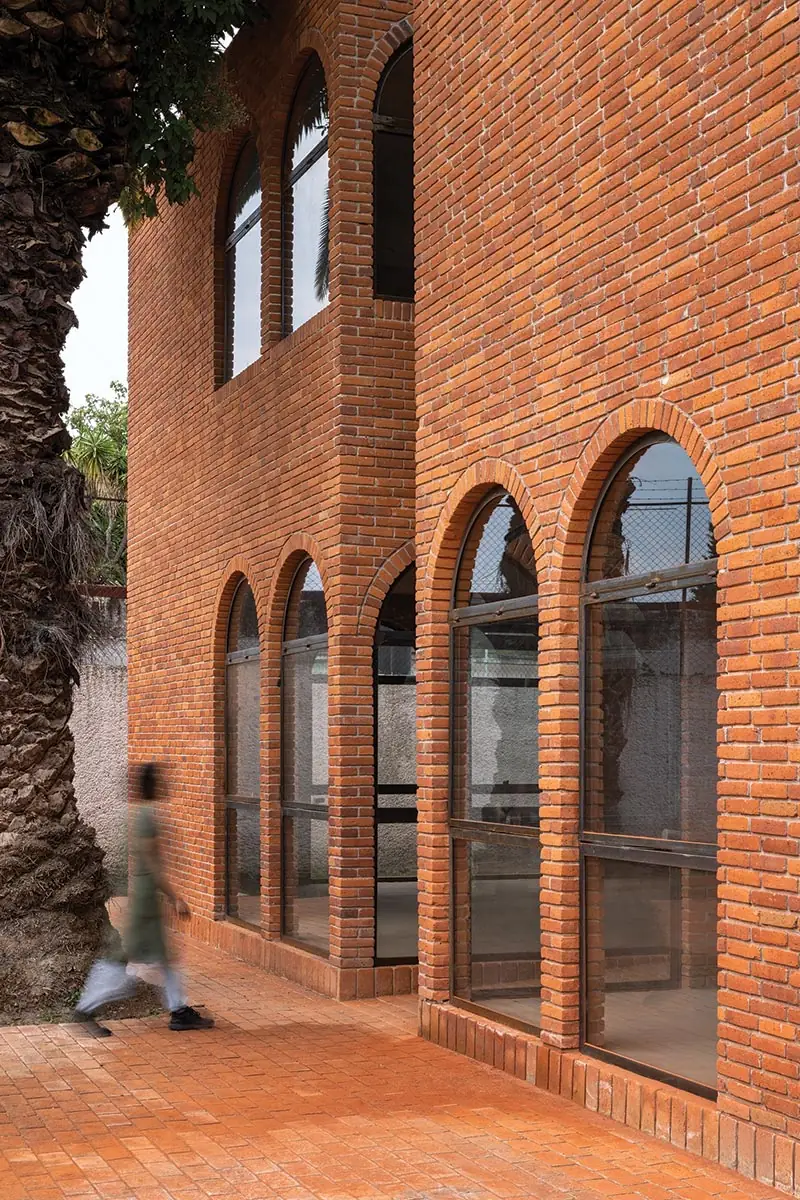
Repeating brick arches form the structure (top of page) and are also expressed in the building’s fenestration (above). Photo © Rafael Gamo, click to enlarge.
‘Brutalist’ is not, perhaps, the most obvious descriptor for Dellekamp’s PILARES, one of 25 designed by prominent architecture firms, largely from Mexico City, under the coordination of Carlos Zedillo Velasco, currently a fellow at the Yale School of Architecture who’s spent much of his career working on collaborative design projects with the state. Built from brick and a bare minimum of concrete, in one of the seven original villages now absorbed into the sprawling southern borough of Tláhuac, Dellekamp’s PILARES occupies a roughly 4,300-square-foot plot bounded by a public primary school and a neighborhood market. The building’s two stories rise from a 50-foot-square footprint, neatly divided into quarters and bisected by a doorless passage that opens to the street at one end and an urban garden at the other. Six of the eight resulting quadrants are given over to workshops and classrooms, and two, stacked in a street-facing corner, to circulation and services. Rather than a rigid system of posts and beams, Dellekamp used a repeating arch as the project’s basic construction system, opening windows in the upstairs classrooms to take in views of the city’s emblematic twin volcanoes about 30 miles to the southeast. Square panels of glass—transparent at the roof, frosted in the floor of the upper story—mark the building’s central axis, drawing in light from above and illuminating clusters of arches reminiscent of Andalusian mosques.
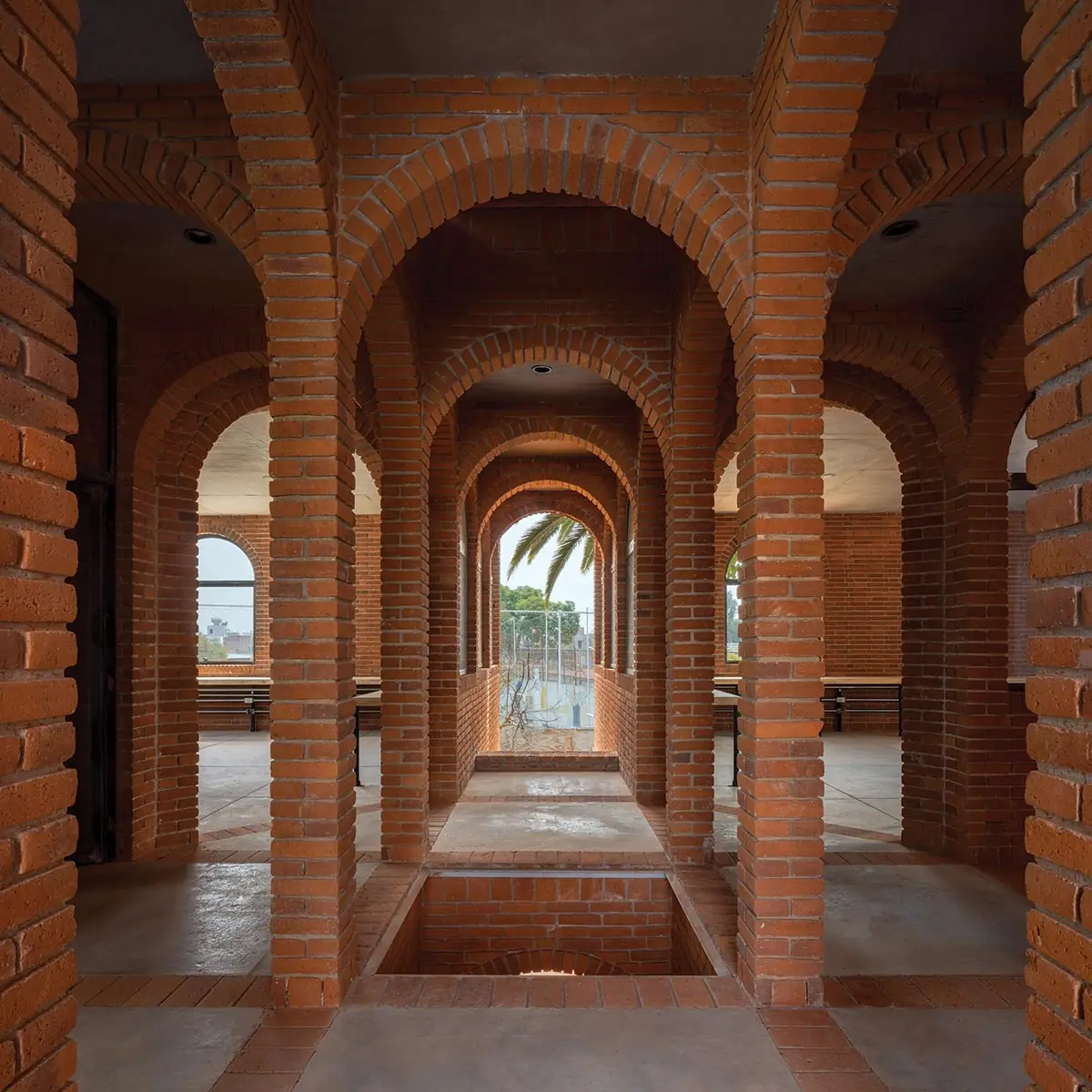
A glazed square within the floor of the second level marks the central axis. Photo © Rafael Gamo
That historicist gesture creates a “formal familiarity for the user, an approach that’s almost Postmodern,” Dellekamp says—a tactic he and his team learned in a previous public project, also coordinated by Zedillo, to rebuild a church destroyed by a 2017 earthquake in the small city of Jojutla. There, arches and barrel vaults softened the hard lines of the otherwise abstract concrete canopy. Here, at Mexico City’s periphery, where many residents build their own homes using exactly the same materials and forms deployed in Dellekamp’s PILARES, the school, he says, offered “a typology that people recognize.”
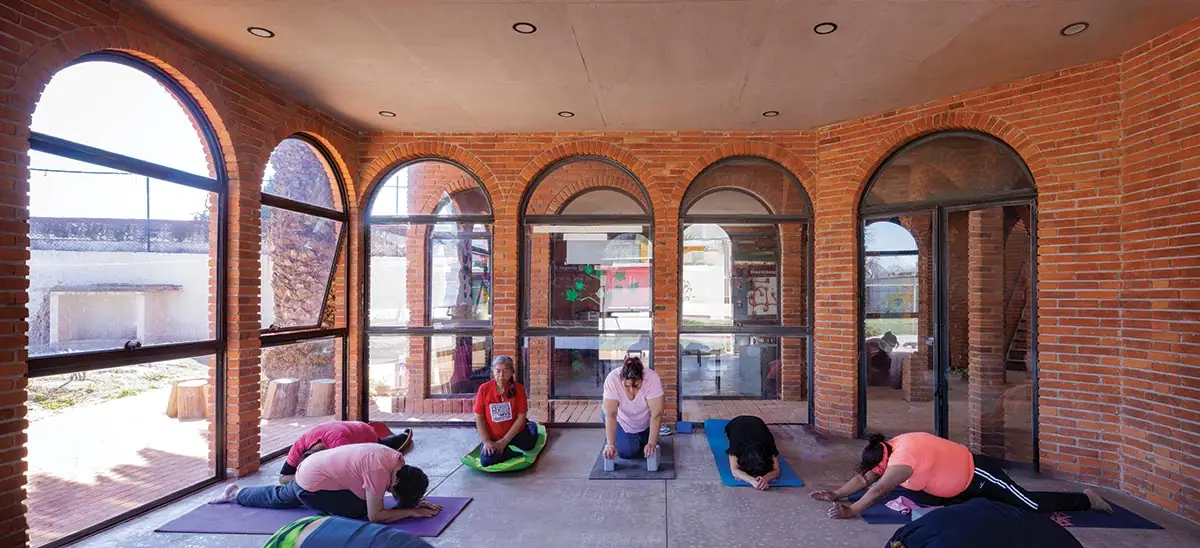
1
The facility has become a vital part of the urban fabric (2) and hosts popular classes (1). Photos © Sandra Pereznieto (1) and Rafael Gamo (2)
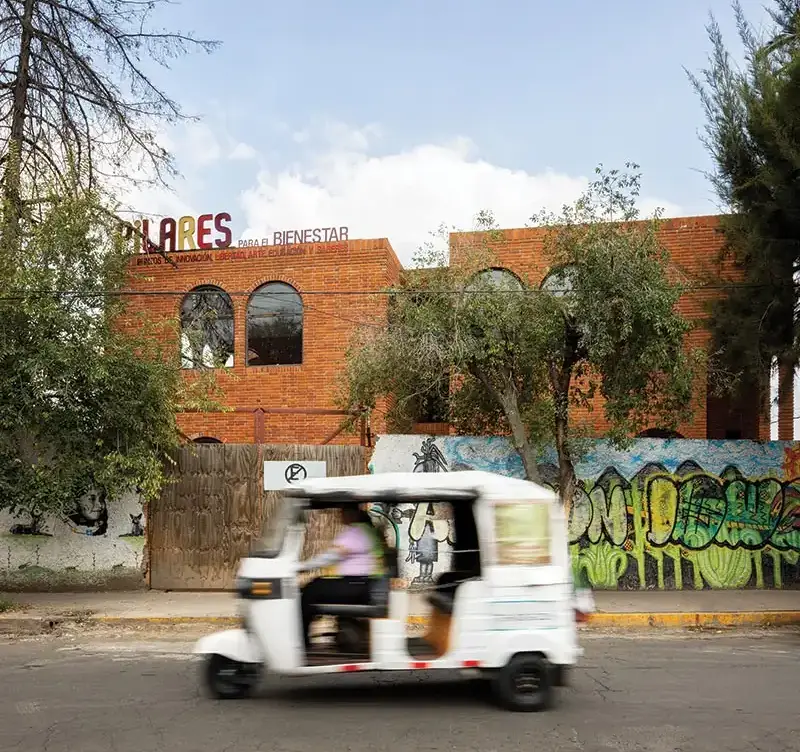
2
According to María de Jesús González Hermosillo, coordinator for two PILARES outposts in Tláhuac (the other is one of about 270 standard PILARES executed by municipal builders), many local residents refer fondly to Dellekamp’s building as el Castillo, or the Castle. Throughout the day, preteens and adults flock to the second-floor computer labs for remote access to continuing-education courses, and to workshops on the ground floor in everything from yoga to jewelry-making, electrical training to urban farming. Most evenings, González Hermosillo says, the classrooms fill to the point that tae kwon do and boxing lessons, attended by kids as young as 5 years old, have to take place outside. The success of this PILARES, says González, owes much to the local community’s deep roots. “They’re much more attached to their traditions, and they really participate in the surrounding neighborhood,” she says. “If you promise something here, you have to follow through.”
Despite the simplicity of Dellekamp’s design and the impeccable execution of its brickwork arches, the community center is imperfectly finished. (So far, 16 of the 25 architect-designed projects have been built, Zedillo says, at a per-square-foot cost comparable to those designed by municipal builders.) Contractors failed to seal the steel window casings, which are already rusted and leaking, months after the building’s completion, and neglected to install glass doors on the upstairs computer labs. For both Dellekamp and González, the biggest disappointment has been the city’s failure to demolish a high white wall that separates the building from the street. “The building is so beautiful,” says González, “but a lot of people walk by without noticing it.”
Still, the PILARES Quetzalcóatl, as Dellekamp’s community center is known, has already been assimilated into its neighborhood’s urban fabric. In early photos, what Dellekamp refers to as the building’s “platonic geometries” seemed elegant but, perhaps, unwelcoming; today, paper cutouts fill its arched windows and colorful drawings brighten its meditative halls. The building has come alive, appropriated by the community, not as a work of architecture but as a piece of public infrastructure—a castle for everyone.
Click drawings to enlarge
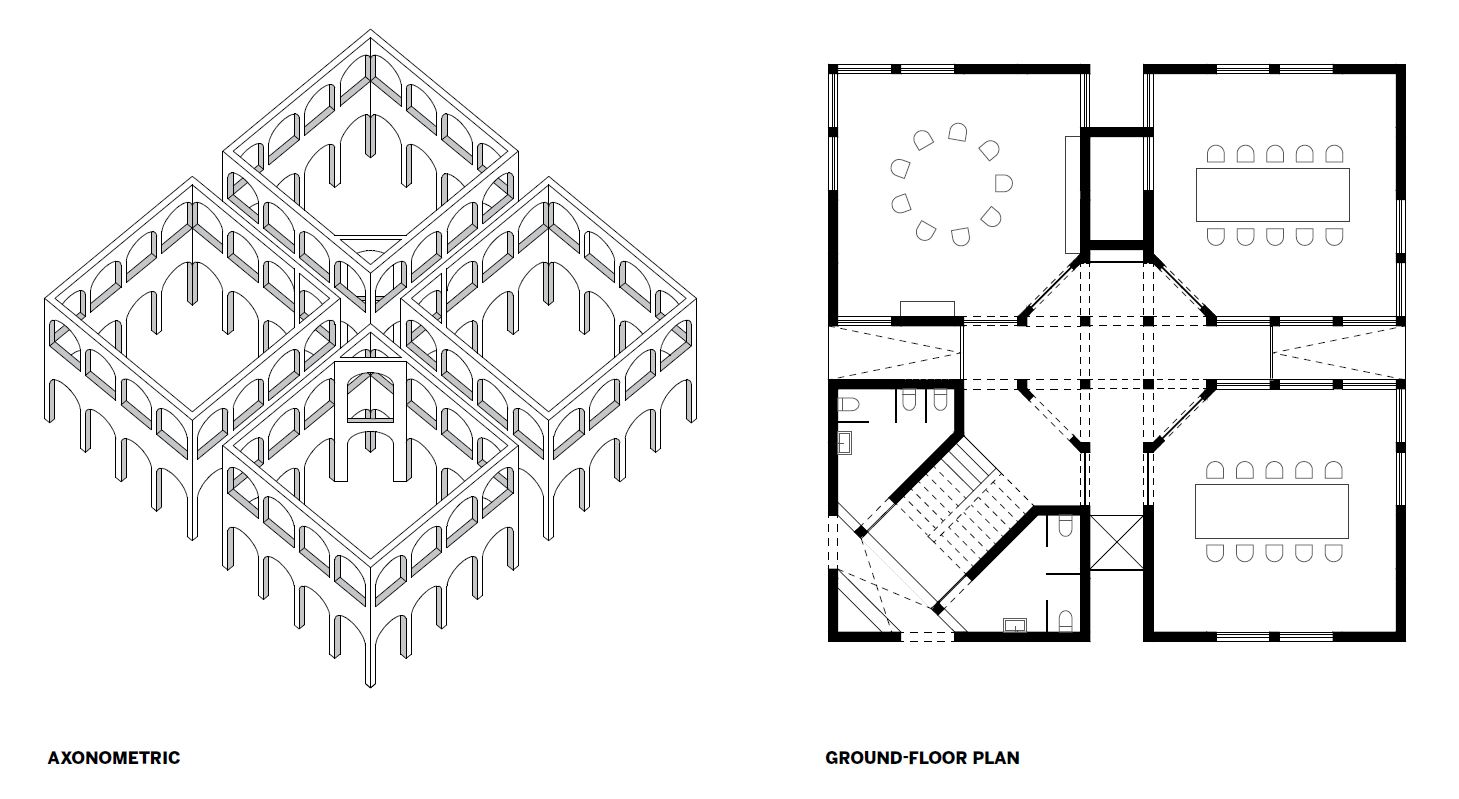
Credits
Architect:
Dellekamp Arquitectos — Derek Dellekamp, principal; Santiago Sitten, Francisco E. Franco, project team
Engineer:
Nina Casas Guzik (structural)
Consultants: Lightchitects (lighting); José Francisco De Riquer Torres (building services); Humberto Orozco (soil)
General Contractor:
DGOP
Client:
Gobierno de la Ciudad de México (Mexico City)
Size:
5,920 square feet
Cost:
$330,000
Completion Date:
October 2023




